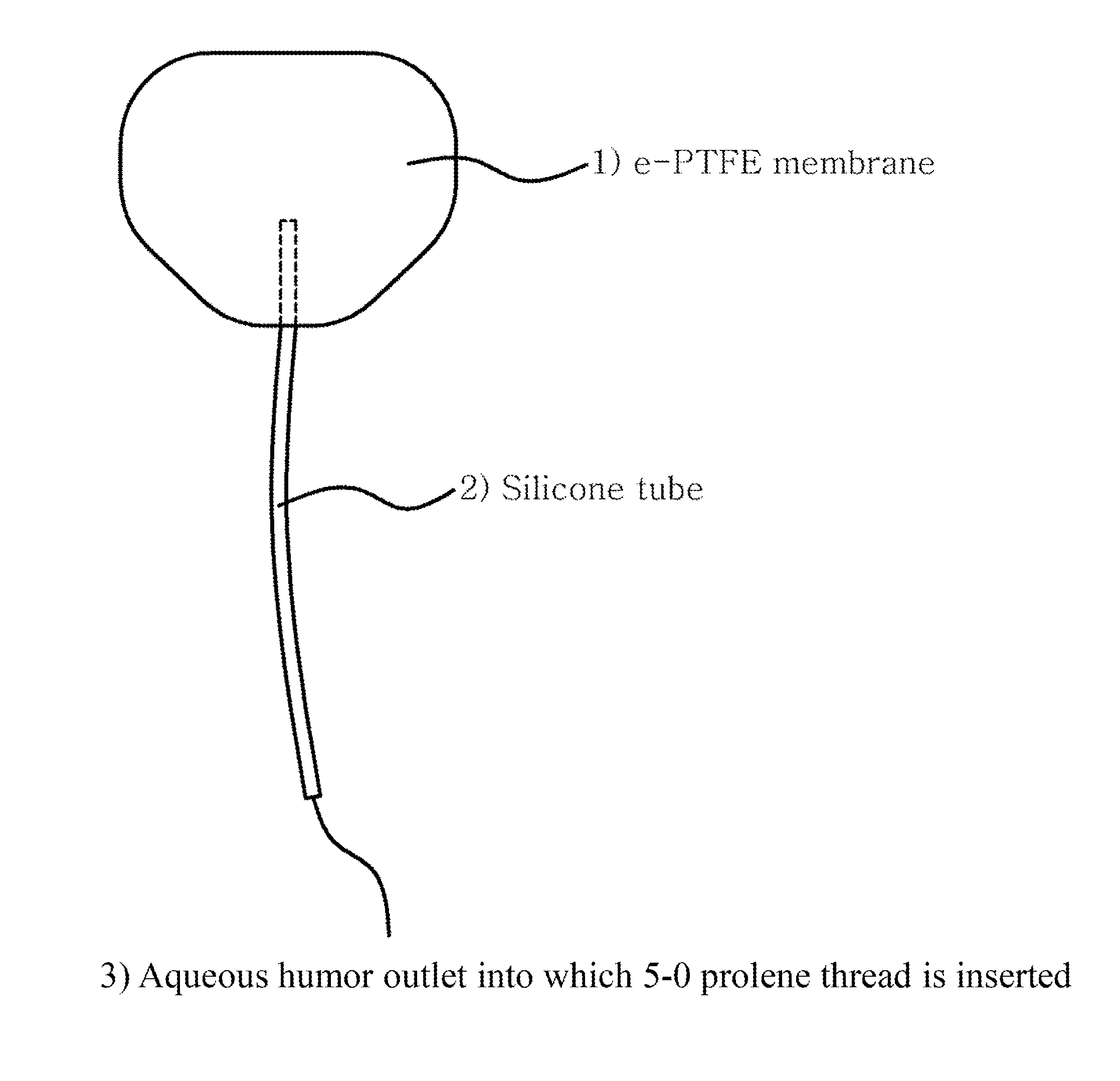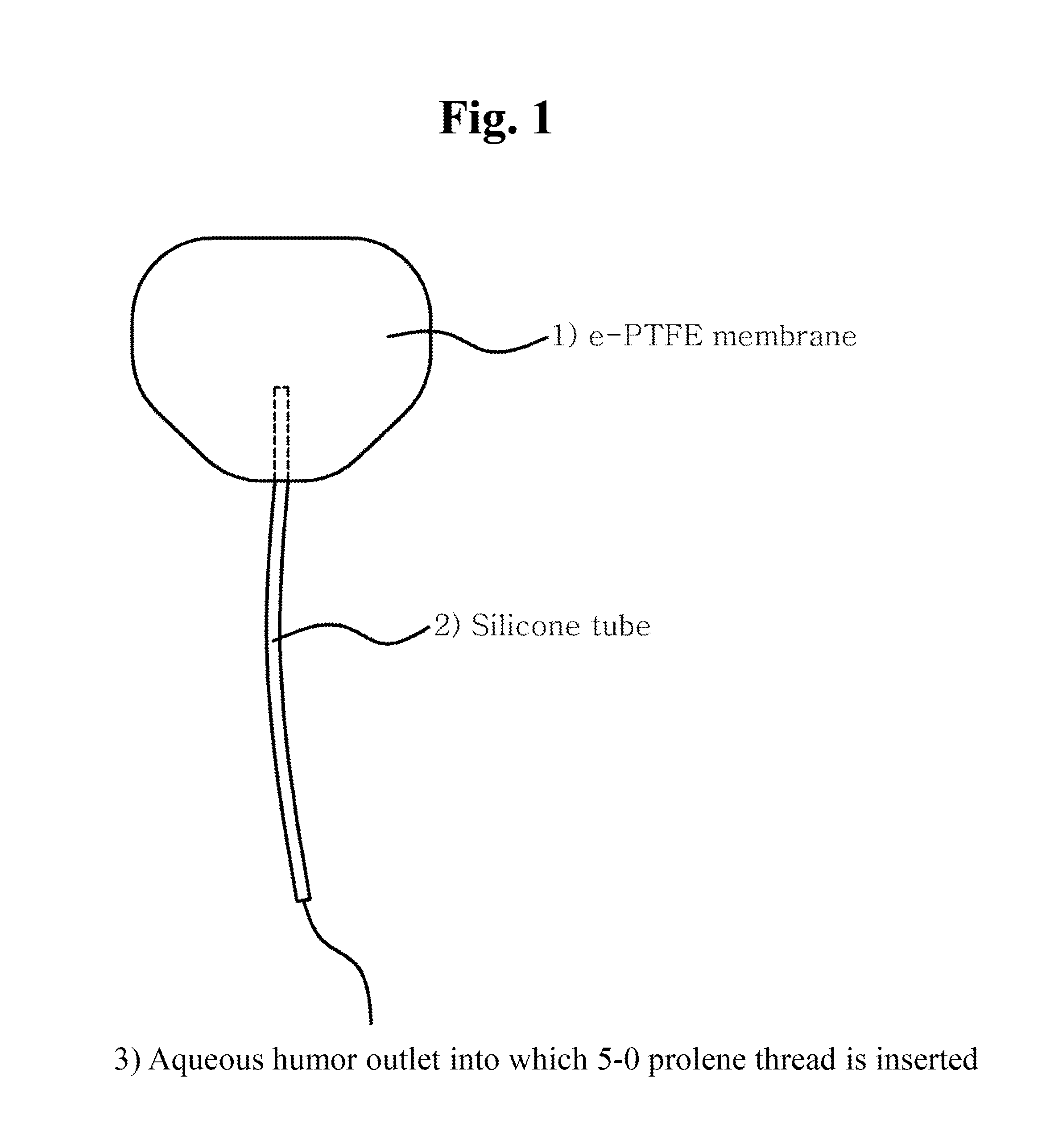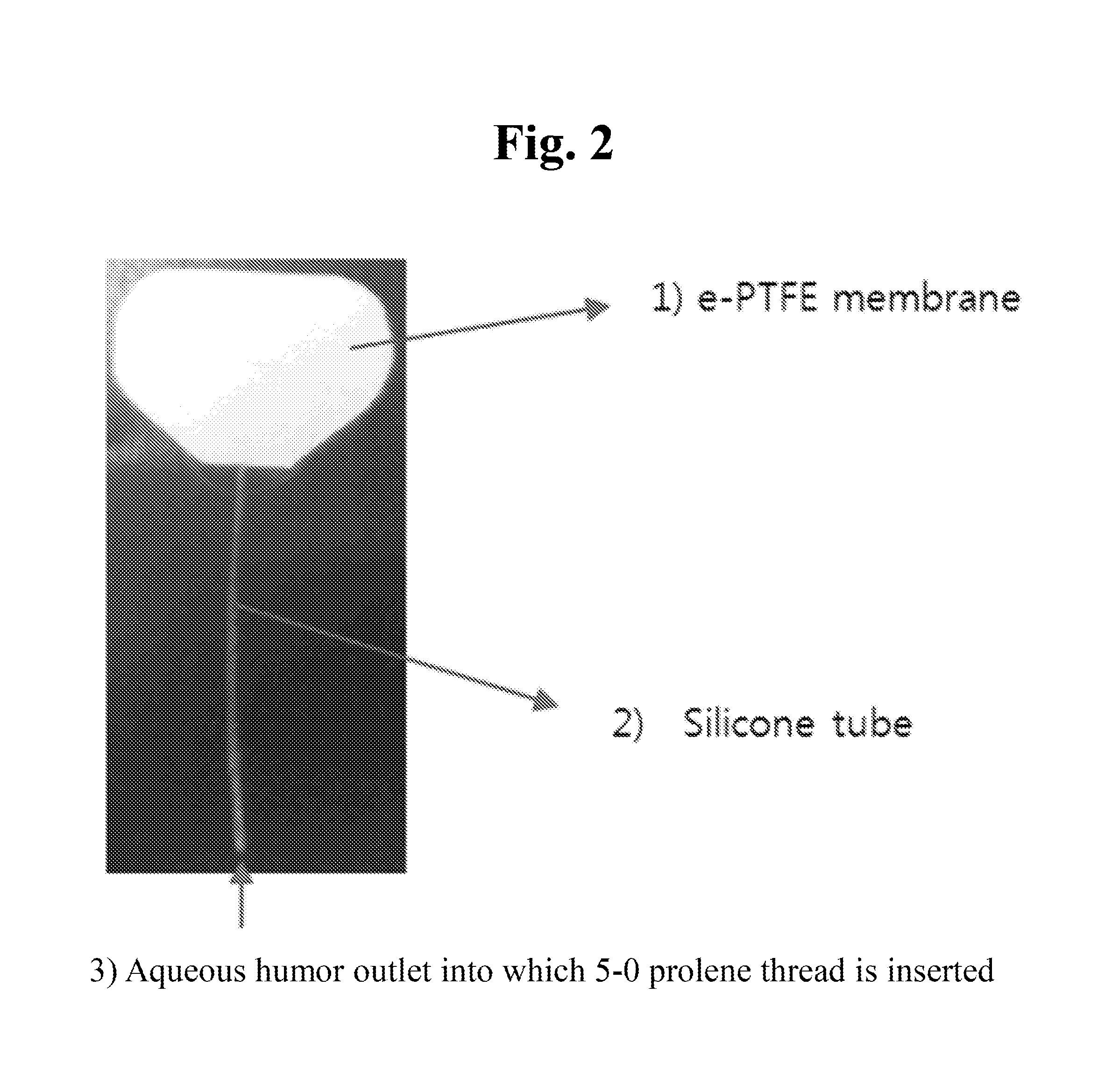Device for treating ocular diseases caused by increased intraocular pressure
- Summary
- Abstract
- Description
- Claims
- Application Information
AI Technical Summary
Benefits of technology
Problems solved by technology
Method used
Image
Examples
embodiment 1
of Glaucoma Treatment Device and Surgery Using the Same
[0049]First, an expanded polytetrafluoroethylene (e-PTFE) membrane was cut to a width of about 18 mm and a length of about 13 mm, and was shaped into an oval with an area of 180 mm2 Next, a silicone tube with an internal diameter of 200 μm and an external diameter of 300 μm was inserted between double layers of the oval e-PTFE membrane and was fixed with silicone adhesive. Then the membrane was sealed at the edge with the silicone adhesive while a portion of the edge corresponding to an opposite side of the tube was not sealed so that drained aqueous humor might flow out. A 5-0 prolene thread was inserted into the fixed silicone tube, and then was pushed into an inner space of the membrane. This is to block the inside of the tube in order to prevent early postoperative hypotony.
[0050]In the department of ophthalmology at Samsung Medical Center, glaucoma surgery was performed on 30 glaucoma patients using the glaucoma treatment d...
experimental example 1
One-Year Observation After Surgery Using Glaucoma Treatment Device
[0051]Clinical outcomes were compared for patients on whom a one-year observation after the surgery using a fine tube (that is, the glaucoma treatment device) has been performed, by using the same items as those of ABC (Ahmed Baerveldt Comparison) research result (Donald L. et al, Treatment Outcomes in the Ahmed Baerveldt Comparison Study after 1 Year of 20 Follow-up. Ophthalmology. 2011; 118:443-452), which was obtained through comparison in one-year prognosis between Ahmed valve implant and Baerveldt implant. The results were summarized in Table 1 below.
TABLE 1Comparative example 1Comparative example 2Embodiment 1—(Ahmed valve group)(Baerveldt implant group)(Fine tube group)Baseline———IOP (mmHg)31.2 ± 11.231.8 ± 12.535.7 ± 12.7Glaucoma medication3.4 ± 1.13.5 ± 1.12.6 ± 0.8No. (% of baseline)143133301 day———IOP (mmHg)10.0 ± 7.9 18.6 ± 13.712.0 ± 9.6 No. (% of baseline)142(99%)130(98%)30(100%)1 week———IOP(mmHg)10.6 ± ...
experimental example 2
Comparison of Causes of Treatment Failure
[0053]The failure causes of the surgery in embodiment 1, comparative example 1, and comparative example 2 were summarized in Table 2 below.
TABLE 2Comparative example 1Comparative example 2Embodiment 1—(Ahmed valve group)(Baerveldt implant group)(Fine tube group)Adjustment of abnormal9(6%)6(5%)0IOP without additionalglaucoma surgeryGlaucoma revision surgery11(8%)1(1%)2(7%)Explantation for complication1(1%)3(2%)0(0%)Persistent hypotony0(0%)2(2%)0(0%)No light perception2(1%)6(5%)0(0%)Total23(16%)18(14%)2(7%)
[0054]As shown in Table 2, in the conventional ABC research (i.e., comparative example 1 and comparative example 2), revision surgery performed within one year from the surgery, failure in adjustment of intraocular pressure to 21 mmHg or higher regardless of using an intraocular pressure medication, explantation of the device due to complications, persistent hypotony, and no light perception were considered as the treatment failures. In embod...
PUM
 Login to View More
Login to View More Abstract
Description
Claims
Application Information
 Login to View More
Login to View More - R&D
- Intellectual Property
- Life Sciences
- Materials
- Tech Scout
- Unparalleled Data Quality
- Higher Quality Content
- 60% Fewer Hallucinations
Browse by: Latest US Patents, China's latest patents, Technical Efficacy Thesaurus, Application Domain, Technology Topic, Popular Technical Reports.
© 2025 PatSnap. All rights reserved.Legal|Privacy policy|Modern Slavery Act Transparency Statement|Sitemap|About US| Contact US: help@patsnap.com



